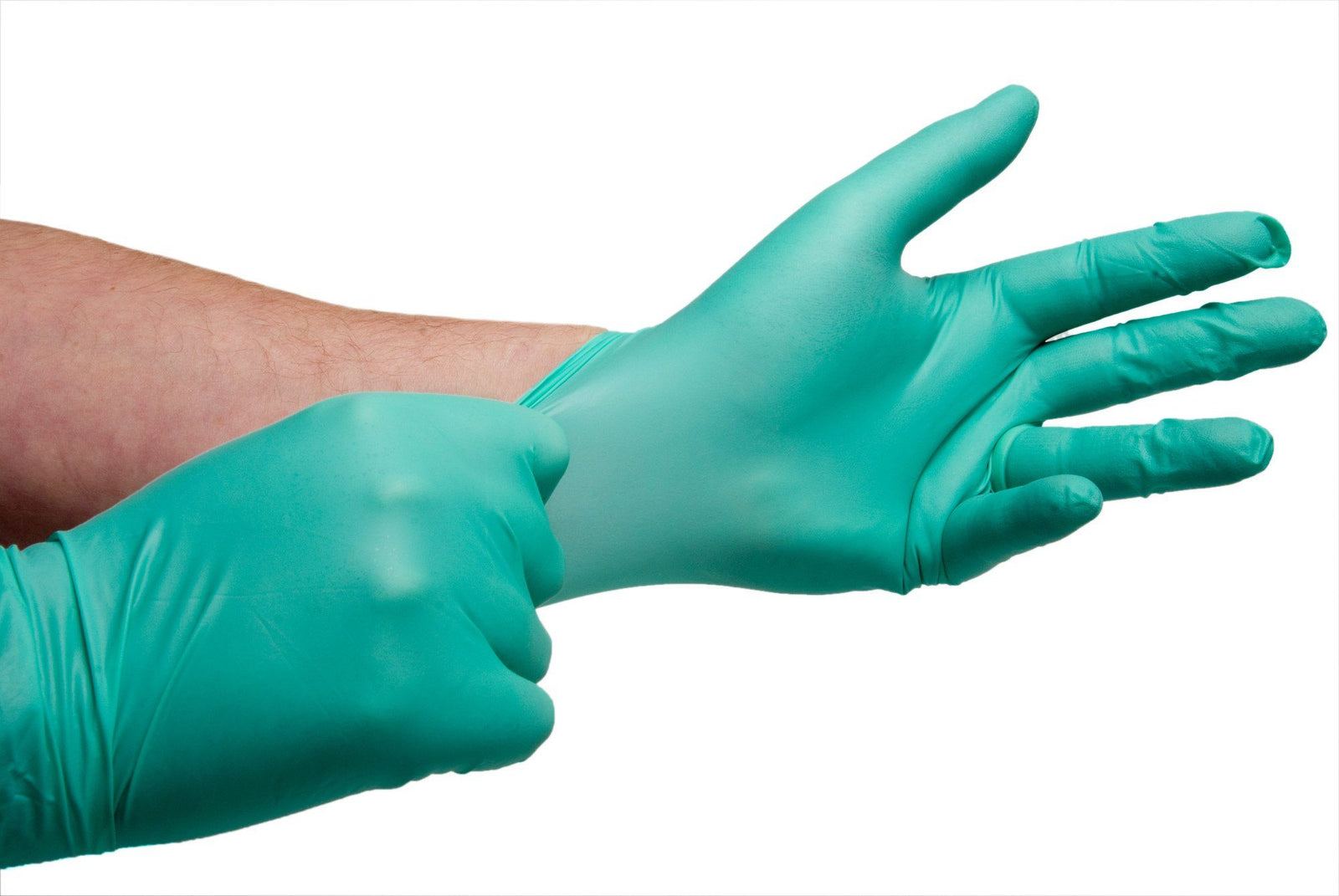Do you have an allergy to latex? Do you wear gloves a lot for work or when providing care to a family member?
Only 1% to 2% of the general population has an allergy to latex. Studies have found that ongoing exposure to latex can increase your risk of developing an allergy.
When the HIV infection began in the 1980s, many workplaces increased glove use. Healthcare workers started wearing gloves for more than sterile procedures. Gloves are now worn by anyone providing healthcare that may come in contact with body fluids.
Gloves are also worn outside of healthcare. For example, tattoo artists, mortuaries, and those who perform piercings. This precaution decreases the worker’s exposure to many bloodborne pathogens.
You will now often see nitrile gloves instead of latex gloves. This protects those with latex sensitivity. It also decreases the chance of developing a latex allergy due to prolonged exposure.
Latex Gloves
Considerations for choosing the style of glove include length, thickness, and temperature. Another important factor is puncture and tear resistance.
Latex gloves come in a variety of sizes to optimize fit and comfort. Having the gloves fit correctly decreases interference with the sense of touch. This is important, for example, when feeling for a vein when starting an IV.
They are also highly durable. Latex gloves provide excellent grip when working with medical equipment. This allows for precision when performing procedures.
Latex gloves are also meant to be discarded after each use. This is now common practice in all settings to decrease potential exposure to blood or disease.
Latex gloves are a good choice when working with biological and water-based materials. However, they may dissolve with organic solvents and provide poor chemical protection.
Due to the rubber's rebound, it’s difficult to see puncture holes in the gloves. Latex gloves can also cause or trigger an allergic reaction.
The American Academy of Allergy, Asthma & Immunology reported that latex gloves provide the best barrier to bacteria and viruses. They also noted that latex fails with abrasion and repeated stretching. Punctures cause failure in barrier protection as well.
Latex Allergies
Natural rubber latex comes from the rubber tree’s lactiferous cells. Many children and adults are allergic to latex. Reactions can range from mild responses to more serious.
Allergic reactions to latex may occur immediately or up to 1 to 2 days later. A common symptom is itching of the skin or mucous membranes exposed to the latex. This may lead to swelling of these areas.
More generalized symptoms include hoarseness, tearing, and swelling of the nose membranes. You should call your physician if you have these reactions.
Serious responses include trouble breathing, feeling lightheaded, or fainting. Some people experience stomach cramps, nausea, vomiting, and diarrhea. If these symptoms occur, you need to seek medical attention immediately.
Nitrile Gloves
Nitrile gloves are preferred over latex because of their infectious and viral resistance. They also provide better protection from chemicals than latex or vinyl gloves.
These gloves don’t contain latex or powder. This decreases the risk of allergic reactions.
Nitrile gloves contain a synthetic rubber material without latex. They come in a variety of sizes and colors. The dark colors show punctures or tears more easily than latex gloves.
They are comfortable when worn over time. These gloves conform to your hands and fingers. Well-fit gloves increase touch sensitivity required in many healthcare situations.
They are more puncture and tear-resistant than latex gloves. Nitrile gloves have superior strength and increased protection against chemicals, oils, and acids.
This kind of glove offers barrier protection against body fluids and other infectious material. These gloves are waterproof and don’t absorb liquids.
These gloves also demonstrate a longer shelf life. This allows for bulk orders without concern about time limits.
These gloves are also designed for one-time use. This prevents the risk of spreading infection.
OSHA Considerations Related to Glove Choice
The Occupational Health and Safety Administration (OSHA) states that employers must select gloves appropriate to their worker's tasks and risks of injury. They must be comfortable, fit well, and allow the performance of duties.
Studies show that worker adherence to glove policies increases with glove fit, comfort, and performance. Lack of glove use puts the worker at risk of injury. Employee injuries result in increased worker’s compensation cost, decreased productivity, and lower morale.
OSHA reports that over one-third of workplace injuries occur to the hands. This can cost as much as $26,000 per injury.
Questions to consider when choosing gloves:
- What type of protection is needed?
- Which glove is best for the identified risks?
- Are abrasions and punctures a potential problem due to working with rough or sharp objects?
- Does the worker need a firm grip to perform their task with precision?
- Does the worker need a high level of dexterity and touch sensitivity?
- Which is more important, thinner gloves for increased dexterity or thicker gloves for barrier protection?
- Is the fit of the glove essential to the task or can it fit loosely?
- How long will the worker be wearing gloves?
By answering these questions, you will be able to make the right glove selection for your employees. This will increase compliance and safety for your workers.
Which Glove Do You Prefer?
There are many things to consider when selecting the right style of glove for your needs. This article has provided information about latex and nitrile gloves to help you make the correct choice.
Our company puts the customer first. We strive to provide maximum product choices. This allows you to choose supplies for your unique medical needs.
We want our home medical solutions to help improve the patient’s quality of life. You can shop and order at any time and from any place. Our site is reliable and secure.
Check out our wide variety of medical supplies today. Contact us to ask questions and place an order.


